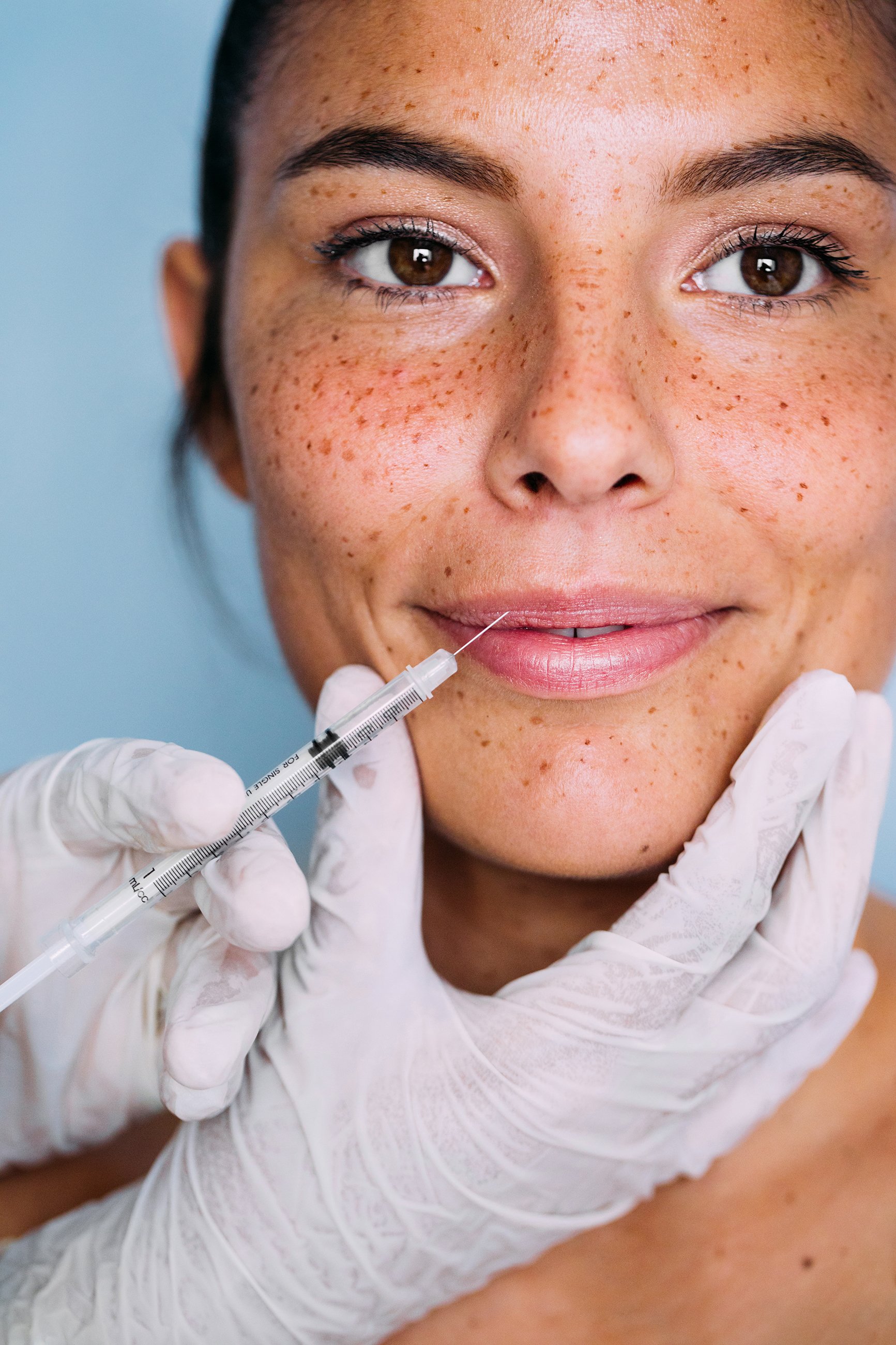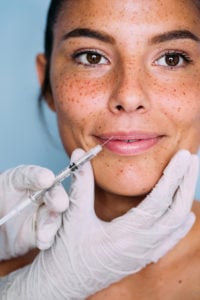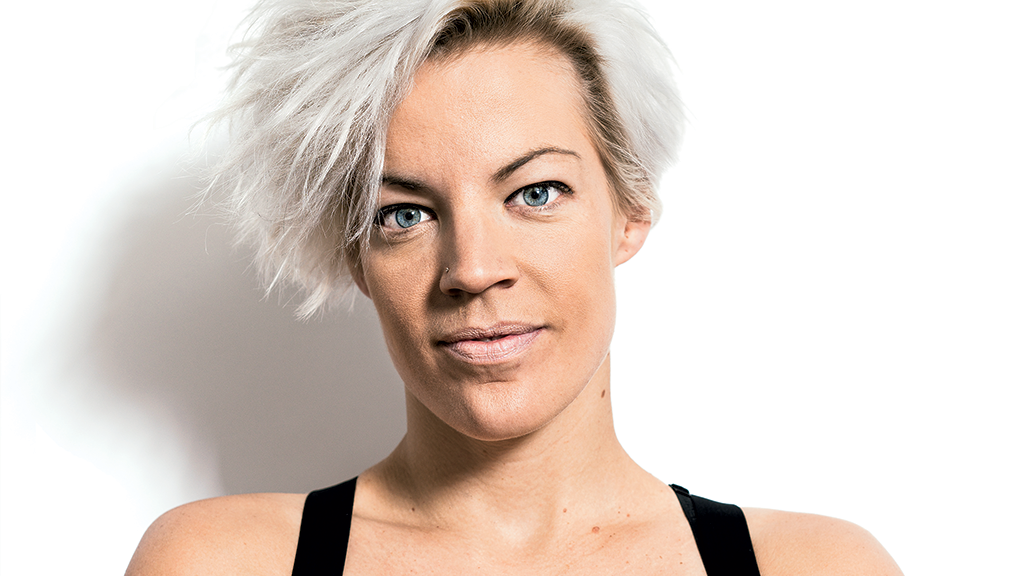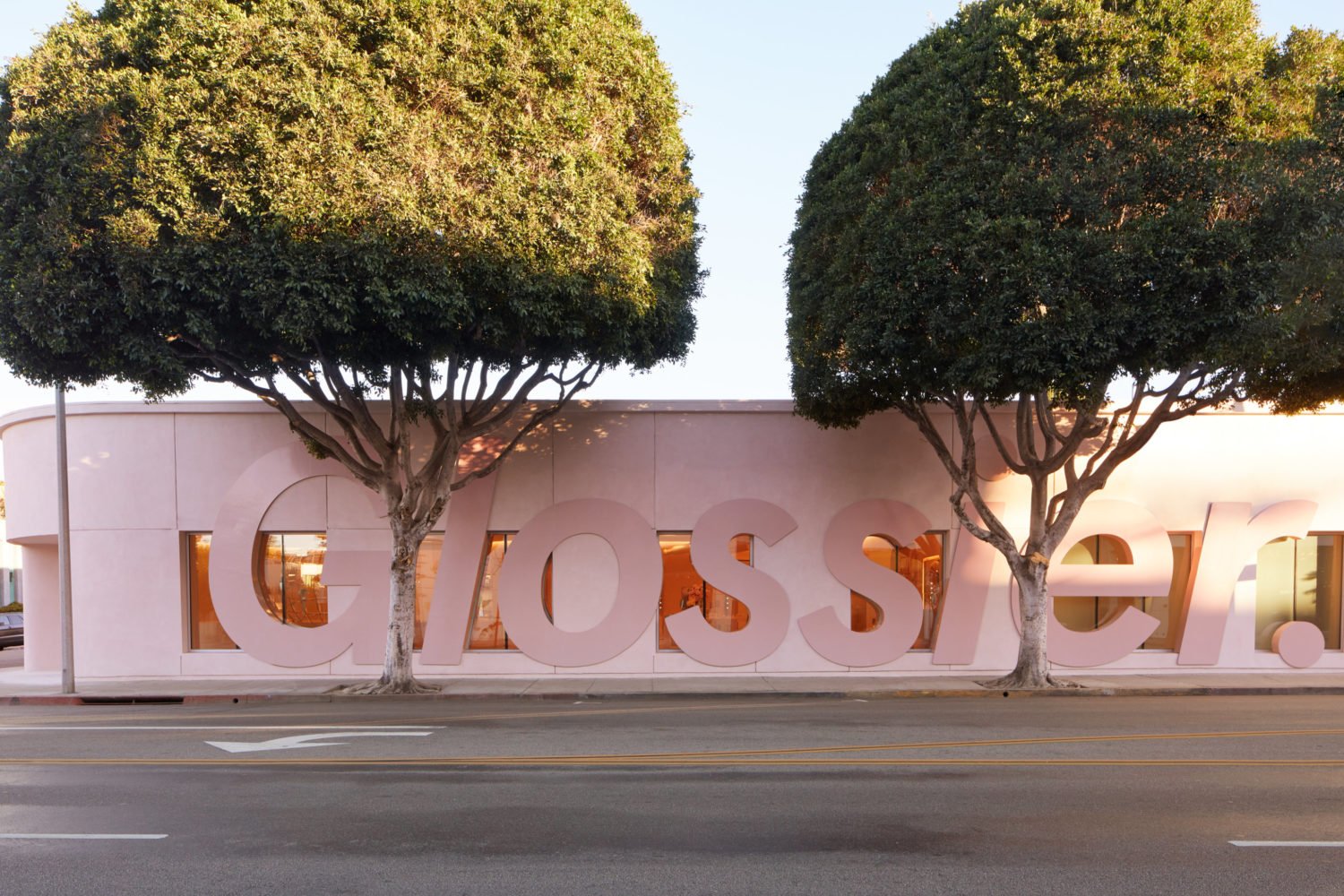
Getting older is part of life. But looking older? That could be a thing of the past. Thanks to a trend dubbed prejuvenation, a combination of “prevention” and “rejuvenation,” more people in their twenties are seeking cosmetic treatments to maintain their youthful glow—and to target signs of aging that may not be visible yet. Popular services include “baby Botox” (administering smaller amounts of neuromodulators in the face), fillers, and treatments such as lasers and microneedling to stimulate collagen production.
According to DC plastic surgeon Troy Pittman, around 30 percent of new patients coming to him for Botox or wrinkle fillers are now under 30. Previously, first-timers were more likely to be in their late thirties to early forties. Dermatologist Terrence Keaney, director of SkinDC, says about 20 percent of patients in his cosmetic practice are in their twenties, a percentage that has steadily increased since 2020.
Not Grandma’s Facelift
When it comes to aging skin, there are two types of wrinkles to know: dynamic lines, which reveal themselves with a smile or squint, and static wrinkles, the forehead folds and crow’s-feet that become omnipresent with age.
There’s a notion that treatments such as Botox are designed to combat the signs of aging once they’ve made themselves clear, but according to Pittman, if you relax some of those dynamic lines through prejuvenation, you can slow them or keep them from transitioning into static ones. Plus, dealing with wrinkles once they’ve formed requires more intensive treatments.
Many prejuvenation patients are hoping to avoid, as they get older, aggressive procedures that can result in a frozen look, says Maral Skelsey, director of the Dermatologic Surgery Center in Chevy Chase. “They saw their grandmothers schedule that major facelift, and they recognize that that person doesn’t quite look the same anymore,” she says. In that way, prejuvenation follows a similar logic to flossing your teeth now to prevent a root canal later.
Aging on the Algorithm
As with so many other things in life these days, the increased interest in prejuvenation can be traced to the start of the pandemic. Doctors point to two main culprits: the Zoom boom, which meant we were spending more time staring at our faces on a screen, and the fact that more people were scrolling on social media while stuck at home, specifically TikTok. On the app, users can embark on a seemingly endless swipe through the world of prejuvenation, learning about the latest lasers from social-media-savvy physicians or listening to a creator’s firsthand account of their injectables journey. Skelsey says that among her younger patients, about nine out of ten will mention TikTok as their catalyst for coming in.
For social-media manager Markisha Woodley, it was TikTok that inspired her first Botox injection at age 26. The Petworth resident received Botox in her masseter muscles, near the cheekbones—a treatment that helps relieve the pain of teeth-grinding while also slimming the jawline over time. Woodley liked one video on TikTok and suddenly found herself inundated with more clips of influencers talking about their Botox experiences. Once an advertisement for the cosmetic-dermatology chain Ever/Body came up on her For You Page, Woodley decided to take the plunge, posting updates after her inaugural injections. Since then, the now-27-year-old has gotten a “lip flip,” in which a neuromodulator such as Botox or Dysport is injected around the upper lip for a fuller look (done at a business she found via an Instagram ad), and she’s currently looking into baby Botox. “People who are a little bit older are confused why I am doing it so young,” says Woodley. “But people my age are never confused about it.”
Gen Z is more comfortable posting content that doesn’t portray their lives as perfectly polished with zero effort. DC plastic surgeon Anita Kulkarni says that when patients are asked to sign a consent form allowing her practice to share photos of their results online, more than 90 percent of those under 30 will sign it “with no hesitation”—a notable shift from previous generations, who were more secretive about their treatments.
Invasion of the Sephora Teens
The doctors we spoke to say there are minimal physical drawbacks to starting prejuvenation treatments in your twenties, as long as you work with a trained practitioner who can ensure you get the right treatment while also debunking some TikTok myths and unrealistic expectations. (It’s also worth noting that there’s little research on long-term Botox use.) No surprise, many doctors say they’re excited to see patients taking a more proactive approach to skin care.
However, there are concerns about warped beauty standards, especially for adolescents. When we’re constantly exposed to flawless, wrinkle-free skin passed through multiple filters, do we lose a sense of how a person actually looks as they age offline? Tina Alster, director of the Washington Institute of Dermatologic Laser Surgery, says she sees middle-schoolers and even elementary-age kids who ask their parents to bring them in for a consultation—tweens and teens who are also obsessively scouring the aisles of Sephora for expensive skin-care products. “Over the past year and a half in particular, every week I have someone who is, in my opinion, a little bit young to be worrying about such things,” Alster says. “They don’t want to be left behind if everybody else is talking about it.” (In those cases, she says, “basically, I’ll start small, because if I don’t do it, they are going to find someone else who will.”)
The fear of missing out doesn’t go away with age. “You’re at a brunch on Sunday with your friends, everyone’s talking about how they’ve just been to their plastic surgeon or their dermatologist for injectables,” says Pittman. “There is almost this peer pressure of ‘Oh, my gosh, should I be doing something?’ ”
Proactive Protection
The answer is yes, you probably should be doing something. But that doesn’t necessarily mean a mad dash to book a filler appointment.
Prejuvenation isn’t just lasers and injections. It’s also wearing sunscreen, staying hydrated, and applying skin care with ingredients such as retinol that help increase collagen production. Younger generations are already taking steps to keep their skin looking spry. “The 20-year-olds are often way more educated on skin care than even my older patients,” says Keaney of SkinDC.
As for the kids obsessed with splurgy serums? “At age ten, you have the skin all these 40-year-olds want,” says Kulkarni. In other words, step away from the phone screen and apply some sunscreen.

Getting older is part of life. But looking older? That could be a thing of the past. Thanks to a trend dubbed prejuvenation, a combination of “prevention” and “rejuvenation,” more people in their twenties are seeking cosmetic treatments to maintain their youthful glow—and to target signs of aging that may not be visible yet. Popular services include “baby Botox” (administering smaller amounts of neuromodulators in the face), fillers, and treatments such as lasers and microneedling to stimulate collagen production.
According to DC plastic surgeon Troy Pittman, around 30 percent of new patients coming to him for Botox or wrinkle fillers are now under 30. Previously, first-timers were more likely to be in their late thirties to early forties. Dermatologist Terrence Keaney, director of SkinDC, says about 20 percent of patients in his cosmetic practice are in their twenties, a percentage that has steadily increased since 2020.
Not Grandma’s Facelift
When it comes to aging skin, there are two types of wrinkles to know: dynamic lines, which reveal themselves with a smile or squint, and static wrinkles, the forehead folds and crow’s-feet that become omnipresent with age.
There’s a notion that treatments such as Botox are designed to combat the signs of aging once they’ve made themselves clear, but according to Pittman, if you relax some of those dynamic lines through prejuvenation, you can slow them or keep them from transitioning into static ones. Plus, dealing with wrinkles once they’ve formed requires more intensive treatments.
Many prejuvenation patients are hoping to avoid, as they get older, aggressive procedures that can result in a frozen look, says Maral Skelsey, director of the Dermatologic Surgery Center in Chevy Chase. “They saw their grandmothers schedule that major facelift, and they recognize that that person doesn’t quite look the same anymore,” she says. In that way, prejuvenation follows a similar logic to flossing your teeth now to prevent a root canal later.
Aging on the Algorithm
As with so many other things in life these days, the increased interest in prejuvenation can be traced to the start of the pandemic. Doctors point to two main culprits: the Zoom boom, which meant we were spending more time staring at our faces on a screen, and the fact that more people were scrolling on social media while stuck at home, specifically TikTok. On the app, users can embark on a seemingly endless swipe through the world of prejuvenation, learning about the latest lasers from social-media-savvy physicians or listening to a creator’s firsthand account of their injectables journey. Skelsey says that among her younger patients, about nine out of ten will mention TikTok as their catalyst for coming in.
For social-media manager Markisha Woodley, it was TikTok that inspired her first Botox injection at age 26. The Petworth resident received Botox in her masseter muscles, near the cheekbones—a treatment that helps relieve the pain of teeth-grinding while also slimming the jawline over time. Woodley liked one video on TikTok and suddenly found herself inundated with more clips of influencers talking about their Botox experiences. Once an advertisement for the cosmetic-dermatology chain Ever/Body came up on her For You Page, Woodley decided to take the plunge, posting updates after her inaugural injections. Since then, the now-27-year-old has gotten a “lip flip,” in which a neuromodulator such as Botox or Dysport is injected around the upper lip for a fuller look (done at a business she found via an Instagram ad), and she’s currently looking into baby Botox. “People who are a little bit older are confused why I am doing it so young,” says Woodley. “But people my age are never confused about it.”
Gen Z is more comfortable posting content that doesn’t portray their lives as perfectly polished with zero effort. DC plastic surgeon Anita Kulkarni says that when patients are asked to sign a consent form allowing her practice to share photos of their results online, more than 90 percent of those under 30 will sign it “with no hesitation”—a notable shift from previous generations, who were more secretive about their treatments.
Invasion of the Sephora Teens
The doctors we spoke to say there are minimal physical drawbacks to starting prejuvenation treatments in your twenties, as long as you work with a trained practitioner who can ensure you get the right treatment while also debunking some TikTok myths and unrealistic expectations. (It’s also worth noting that there’s little research on long-term Botox use.) No surprise, many doctors say they’re excited to see patients taking a more proactive approach to skin care.
However, there are concerns about warped beauty standards, especially for adolescents. When we’re constantly exposed to flawless, wrinkle-free skin passed through multiple filters, do we lose a sense of how a person actually looks as they age offline? Tina Alster, director of the Washington Institute of Dermatologic Laser Surgery, says she sees middle-schoolers and even elementary-age kids who ask their parents to bring them in for a consultation—tweens and teens who are also obsessively scouring the aisles of Sephora for expensive skin-care products. “Over the past year and a half in particular, every week I have someone who is, in my opinion, a little bit young to be worrying about such things,” Alster says. “They don’t want to be left behind if everybody else is talking about it.” (In those cases, she says, “basically, I’ll start small, because if I don’t do it, they are going to find someone else who will.”)
The fear of missing out doesn’t go away with age. “You’re at a brunch on Sunday with your friends, everyone’s talking about how they’ve just been to their plastic surgeon or their dermatologist for injectables,” says Pittman. “There is almost this peer pressure of ‘Oh, my gosh, should I be doing something?’ ”
Proactive Protection
The answer is yes, you probably should be doing something. But that doesn’t necessarily mean a mad dash to book a filler appointment.
Prejuvenation isn’t just lasers and injections. It’s also wearing sunscreen, staying hydrated, and applying skin care with ingredients such as retinol that help increase collagen production. Younger generations are already taking steps to keep their skin looking spry. “The 20-year-olds are often way more educated on skin care than even my older patients,” says Keaney of SkinDC.
As for the kids obsessed with splurgy serums? “At age ten, you have the skin all these 40-year-olds want,” says Kulkarni. In other words, step away from the phone screen and apply some sunscreen.
This article appears in the April 2024 issue of Washingtonian.

















